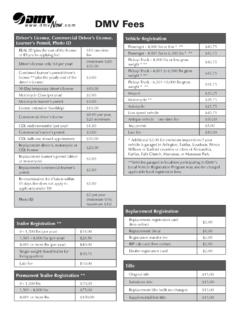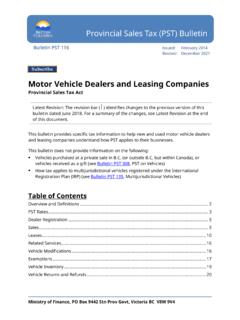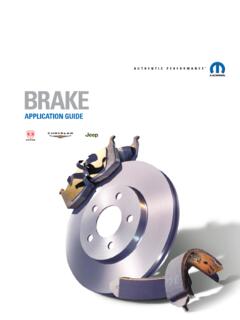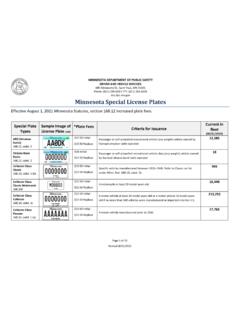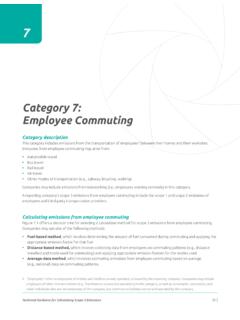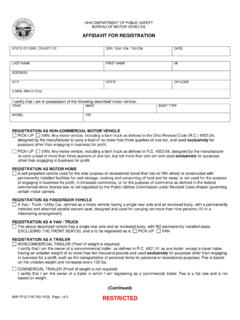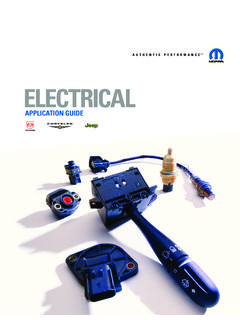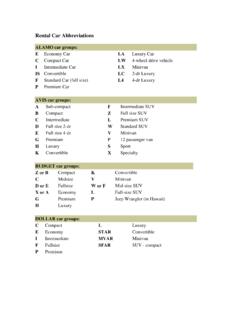Transcription of British Tyre Manufacturers’ Association - BTMA
1 British Tyre Manufacturers Association Subject: Minor repairs to passenger car and light van tyres Issued: 9th June 2010 Reviewed: 24th June 2014 Tyre Technical Advisory Committee The comments in this Position Statement are based on the general operating practices and environment found in the United Kingdom and the Republic of Ireland. No undertaking express or implied is given regarding the applicability of these comments to other operating environments. No part of this publication may be reproduced, stored in a retrieval system, or transmitted in any form or by any means, mechanical, photocopying, recording or otherwise, without the prior permission in writing of the publisher.
2 Although great care has been taken in the compilation and preparation of this Position Statement to ensure accuracy, the publisher cannot in any circumstances accept responsibility for errors or omissions or advice given in this publication. Copyright BTMA 2014 Page 1 of 3 Published by the BTMA The BTMA only condones tyre repairs which are carried out in accordance with the recommendations in the prevailing issue of British Standard BS AU 159. Before commencement consumers are advised to confirm with the Repairer that all repair work will be carried out in accordance with these BSI guidelines.
3 (Note: Insertion of a tube in a tubeless tyre is not considered a suitable alternative to a permanent repair) A summary of the main points contained within BS AU 159 is shown below. Repair in area T only, requiring one of the following: a) Rubber only combination plug patch. b) Rubber only patch and penetration filling material. Note: Minor surface rubber repairs ( no penetration or ply damage) using penetration filling material only, are permitted anywhere on the exterior of the tyre without limits. Repairable area T defined as Percentage of nominal section Width of tyre Maximum diameter of Penetration damage at base of Injury in area T mm (after preparation)
4 Nominal Section Width mm % Up to and including155 60 6 Over 155 and up to 200 65 6 Over 200 70 6 Tyre Nominal Section Width T Value mm Tyre Nominal Section Width T Value mm Tyre Nominal Section Width T Value mm 125 75 205 144 285 200 135 81 215 151 295 207 145 87 225 158 305 214 155 93 235 165 315 221 165 107 245 172 325 228 175 114 255 179 335 235 185 120 265 186 345 242 195 127 275 193 Figure 1 Calculated width values for area T British Tyre Manufacturers Association Subject: Minor repairs to passenger car and light van tyres Issued: 9th June 2010 Reviewed: 24th June 2014 Tyre Technical Advisory Committee The comments in this Position Statement are based on the general operating practices and environment found in the United Kingdom and the Republic of Ireland.
5 No undertaking express or implied is given regarding the applicability of these comments to other operating environments. No part of this publication may be reproduced, stored in a retrieval system, or transmitted in any form or by any means, mechanical, photocopying, recording or otherwise, without the prior permission in writing of the publisher. Although great care has been taken in the compilation and preparation of this Position Statement to ensure accuracy, the publisher cannot in any circumstances accept responsibility for errors or omissions or advice given in this publication.
6 Copyright BTMA 2014 Page 2 of 3 Published by the BTMA Procedure 1. INITIAL INSPECTION a) In the interests of safety, if it is necessary to partially inflate the tyre to locate the injury/penetration, proceed with caution in 5 psi increments and do not exceed 15 psi. b) Remove the tyre from the wheel and thoroughly inspect, both internally and externally. c) Do not undertake repair if the tyre exhibits any of the following:- Inadequate tread depth (legal minimum ). Splits, cuts, rubber crazing/cracking reaching the casing.
7 Casing break-up. Previous repairs outside the scope of BS AU 159 unless they are specialist repairs carried out by the original tyre Significant contamination by solvents etc. Bead damage, including broken bead core. Liner deterioration. Secondary effects, under-inflation/deflation damage or savaging by the point of a penetrating object. Exposed cords due to tread wear or sidewall scuffing. Tread or sidewall rubber separation. Belt separation (radial ply tyres). 1 Tyres with major repairs conforming to the British Standard should be marked internally BS AU 159 adjacent to the repair together with the repairer s name and identification mark.
8 2. PREPARATION AND REPAIR a) Ensure that the tyre is clean and dry. b) Determine the angle of penetration. 2 c) Prepare the penetration channel with minimal use of a rotary mill cutter or similar. d) Remove all loose and visibly oxidised material, buffing the rubber in the cavity and surrounding area to a suede finish. e) Clean an area significantly larger than the patch with solvent, removing all contaminants, mould releasing f) Hold the patch in position and mark its outline on the inner liner.
9 G) Mechanically buff the inner liner to approximately 5mm beyond the marked area, removing any raised ribs and producing a flat, suede finish. h) Remove dust and extraneous material, wire particles and fluffed cords. 4 i) Apply suitable repair material in accordance with manufacturer s instructions. 2 If the angle exceeds 25 , a two piece repair system or rubber only patch with penetration filling material may need to be used (refer to manufacturer s instructions).
10 3 If buffer liquids (solvents) are used, the area should not be considered buffed. 4 A vacuum cleaner is recommended. Fibrous cloths and compressed air should not be used. British Tyre Manufacturers Association Subject: Minor repairs to passenger car and light van tyres Issued: 9th June 2010 Reviewed: 24th June 2014 Tyre Technical Advisory Committee The comments in this Position Statement are based on the general operating practices and environment found in the United Kingdom and the Republic of Ireland.

